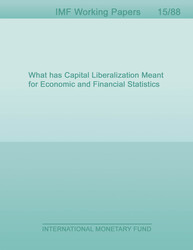
What has Capital Liberalization Meant for Economic and Financial Statistics
The liberalization of capital flows both in the domestic economy and cross-border has been among the most important policies adopted by IMF member countries over recent decades. The impact has been wide-ranging. This paper looks at the impact on the field of economic and financial statistics in the past two decades, as statisticians have responded to the changing policy needs. The paper considers the historical context of changes that have occurred, draws out the key trends, and asks where these trends might lead statisticians in the foreseeable future. The paper considers that there has been nothing short of a revolution in the field of economic and financial statistics over the past two decades led by a need for greater transparency; greater standardization; new data sets to support understanding of financial interconnections and financial sector risks; and the strengthening of the governance of the statistical function through greater independence of statistical agencies.
Publication date: April 2015
ISBN: 9781475520965
$18.00
Add to Cart by clicking price of the language and format you'd like to purchase
Available Languages and Formats
| English |
Prices in red indicate formats that are not yet available but are forthcoming.
Topics covered in this book
This title contains information about the following subjects.
Click on a subject if you would like to see other titles with the same subjects.
Economics- Macroeconomics , Economics / General , International - Economics , data dissmination standards , financial interconnections , capital flow , capital flows , investment , financial stability , monetary fund , General , financial interconnections
Summary
Copyright © 2010 - 2024
Powered by:
AIDC



